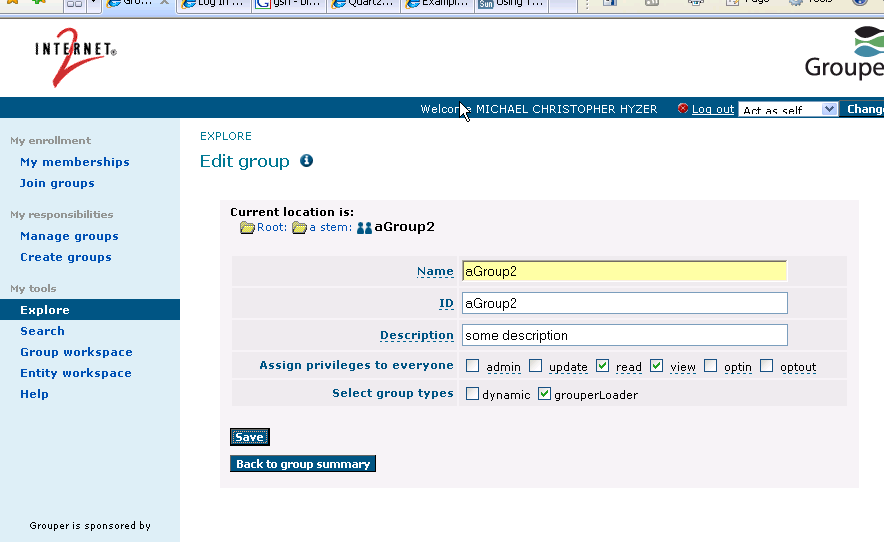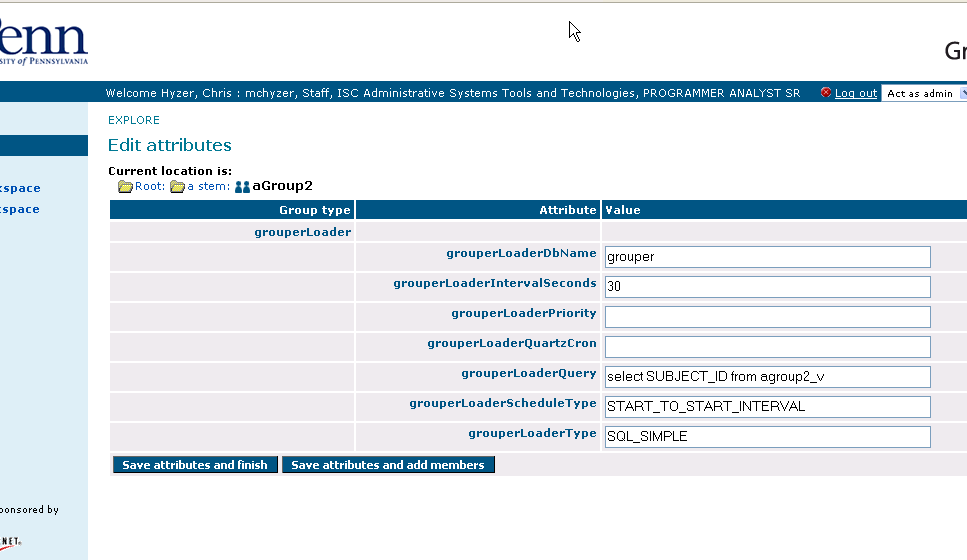...
You can also use the UI, here are screenshots (obviously these need some work).
Run grouper
...
daemon
The first time you run, it will probably fail, and give you DDL in the logs to run in your database (to add a couple of tables). Run the scripts and you should be all set.
...
| No Format |
|---|
loaderGroup = GroupFinder.findByName(GrouperSession.startRootSession(), "school:orgs:orgGroup");
loaderRunOneJob(loaderGroup);
loaderRunOneJob("MAINTENANCE_cleanLogs");
|
Note that as of Grouper 2.3, if you create a new loader job, you can have it scheduled without restarting the daemon by using an option in the New UI. If you're an admin of the group, under "More actions", there's an option named "Schedule loader process". This option can also be used if you change the loader's schedule.
Groups as members
If you are using the loader to load hierarchies where groups are members, then you need to have a query which has the column SUBJECT_IDENTIFIER with the group system name, or SUBJECT_ID with the group uuid. Useful for org charts. See this example
...
- add subject source to group attribute (or default at least) so it doesn't have to be a sql column if all are the same
- make specific blackout times (runtime via config file?)
- make jobs based on person trigger. If there is a query that says when people change, then update that person's memberships in the groups that are dynamic based on that person-change-query
- make full refresh jobs for the incremental jobs (e.g. weekly)save quartz info to DB so that stopping / starting isn't that drastic
- make an RMI server so that interactions can happen at runtime (to see status, stop/start jobs, etc). Maybe this would happen from gsh
- try the name pattern after loader is done, and if the number of groups is less than the number of groups in this round of loader, set the job status to WARNING and add a descriptive message
...

